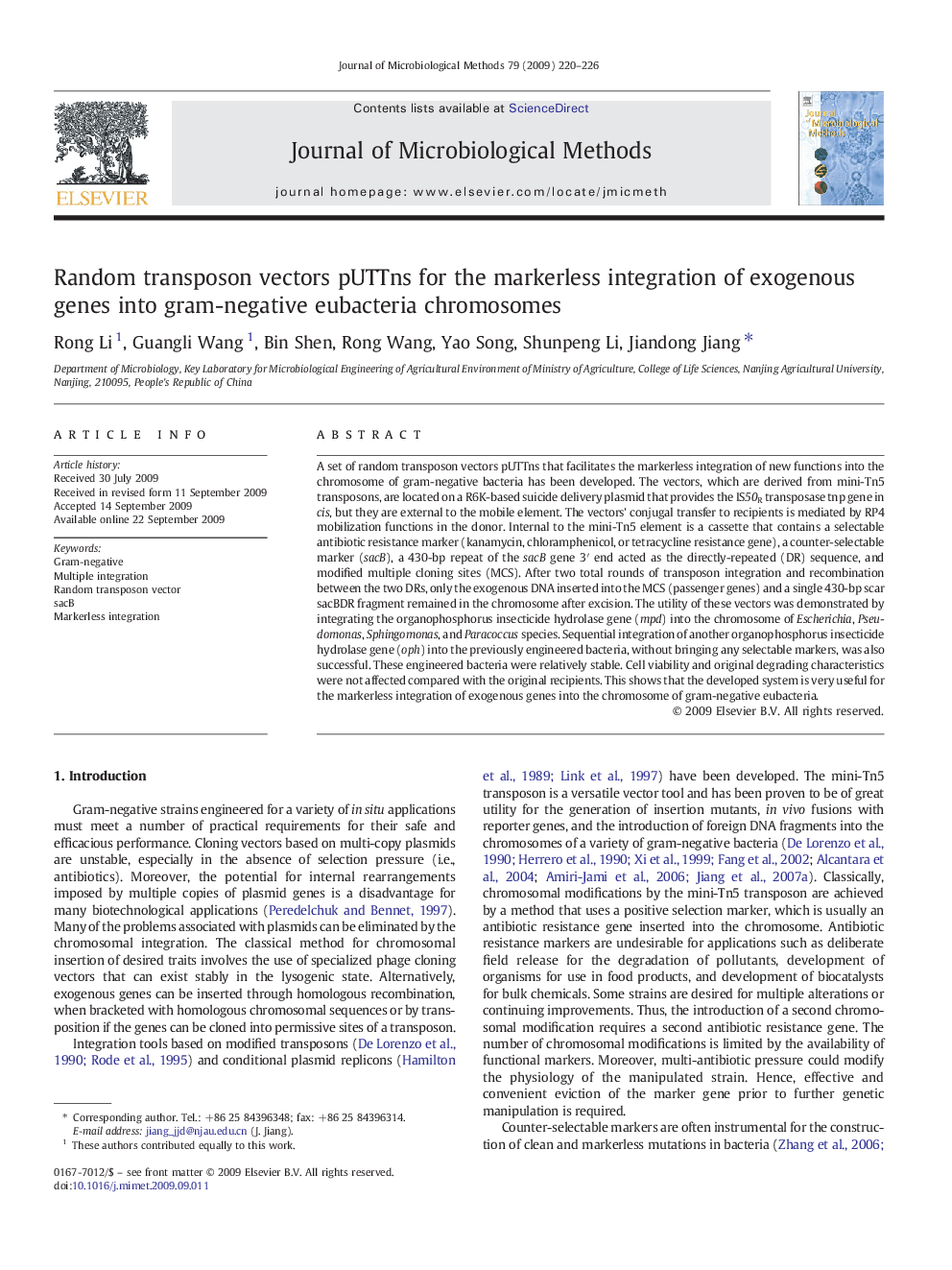| کد مقاله | کد نشریه | سال انتشار | مقاله انگلیسی | نسخه تمام متن |
|---|---|---|---|---|
| 2090697 | 1081514 | 2009 | 7 صفحه PDF | دانلود رایگان |

A set of random transposon vectors pUTTns that facilitates the markerless integration of new functions into the chromosome of gram-negative bacteria has been developed. The vectors, which are derived from mini-Tn5 transposons, are located on a R6K-based suicide delivery plasmid that provides the IS50R transposase tnp gene in cis, but they are external to the mobile element. The vectors' conjugal transfer to recipients is mediated by RP4 mobilization functions in the donor. Internal to the mini-Tn5 element is a cassette that contains a selectable antibiotic resistance marker (kanamycin, chloramphenicol, or tetracycline resistance gene), a counter-selectable marker (sacB), a 430-bp repeat of the sacB gene 3′ end acted as the directly-repeated (DR) sequence, and modified multiple cloning sites (MCS). After two total rounds of transposon integration and recombination between the two DRs, only the exogenous DNA inserted into the MCS (passenger genes) and a single 430-bp scar sacBDR fragment remained in the chromosome after excision. The utility of these vectors was demonstrated by integrating the organophosphorus insecticide hydrolase gene (mpd) into the chromosome of Escherichia, Pseudomonas, Sphingomonas, and Paracoccus species. Sequential integration of another organophosphorus insecticide hydrolase gene (oph) into the previously engineered bacteria, without bringing any selectable markers, was also successful. These engineered bacteria were relatively stable. Cell viability and original degrading characteristics were not affected compared with the original recipients. This shows that the developed system is very useful for the markerless integration of exogenous genes into the chromosome of gram-negative eubacteria.
Journal: Journal of Microbiological Methods - Volume 79, Issue 2, November 2009, Pages 220–226